Studying CPR has gained popularity in recent years in Las Vegas. The World Health Organization (WHO), Center for Disease Control (CDC), and American Heart Association (AHA) have all banded together to raise awareness on the dangers of heart disease and its complications. Millions of people all over the world are diagnosed with a heart condition each year, and millions die from it. Out-of-hospital cardiac arrests still remain a big problem, with very high mortality rates due to lack of immediate bystander response.
This is why learning CPR should be important to everyone – not just health care providers. Training programs are available for both lay persons and allied health workers at our training locations, at very affordable rates.
Coronary Artery Disease (CAD)

CPR – short for cardiopulmonary resuscitation – is a set of skills and management techniques used during cardiovascular emergencies. With millions of people all over the world dying from heart disease each year, learning CPR has never been more important until today. Approximately 600,000 Americans die each year from a cardiovascular disease, and a third of those deaths are caused primarily by cardiac arrest. But what is cardiac arrest?
When the heart stops beating and blood is not circulating through the body, that condition is called cardiac arrest. It can be caused by a number of CVDs, the most common being coronary artery disease or CAD. The coronary arteries are blood vessels that supply cardiac tissue with oxygenated blood. When these coronary arteries become obstructed with plaque, it compromises the amount of blood received by the heart and affecting its functionality. Plaque is made up of fatty deposits and inflammatory cells that obstruct blood flow through vessels in the body.
CPR – How it helps
CPR is made up of three skills – compressions, ventilation, and defibrillation. When the heart stops beating, the first line of management is to help it beat manually. Through chest compressions, the heart is pumped and blood and is sent circulating through the body. However, if the victim is not breathing regularly or not breathing at all, pumping the heart manually won’t help because the blood circulating isn’t oxygenated. This is where ventilations come in. Ventilation is done by giving rescue breaths to an unresponsive victim. The breaths can be given mouth-to-mouth or with a bag valve mask (if available).
Advanced courses go beyond these basics, focusing on medical management skills. In our advanced courses, we train rescuers in medication administration and what common cardiac drugs are used during a code. We also introduce them to medical equipment and diagnostic procedures such as electrocardiograms (ECGs).
Programs you can enroll in at Las Vegas CPR
- Basic CPR, AED, and first aid – for the public, 4 hours
- Basic CPR, AED and first aid C – for health care providers, 4.5 hours
- Basic Life Support for Health Care Providers, 4.5 hours
- Advanced Cardiac Life Support – 16 hours
- Pediatric Advanced Life Support – 14 hours
